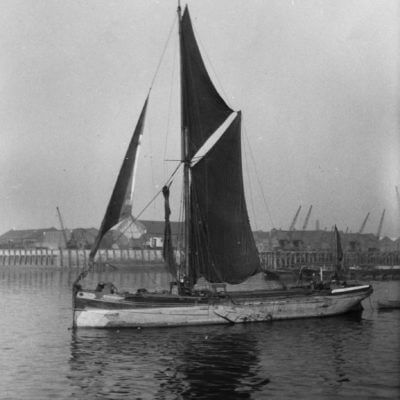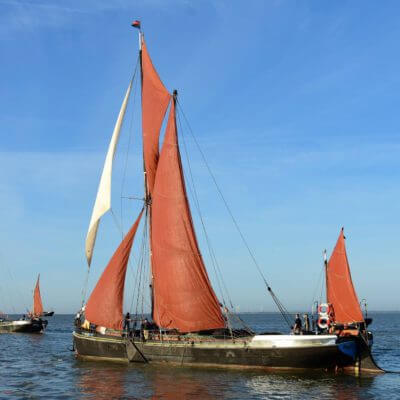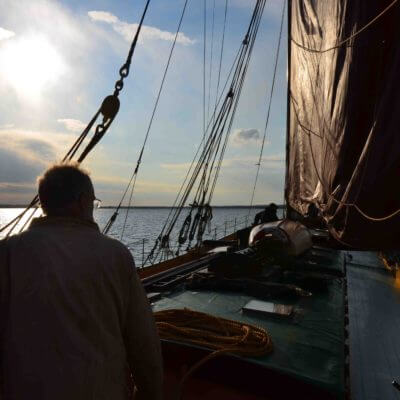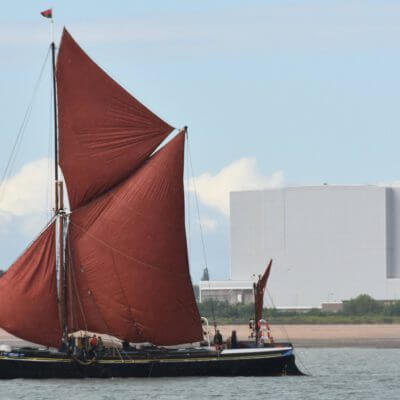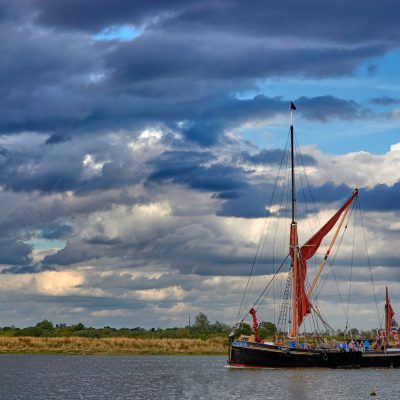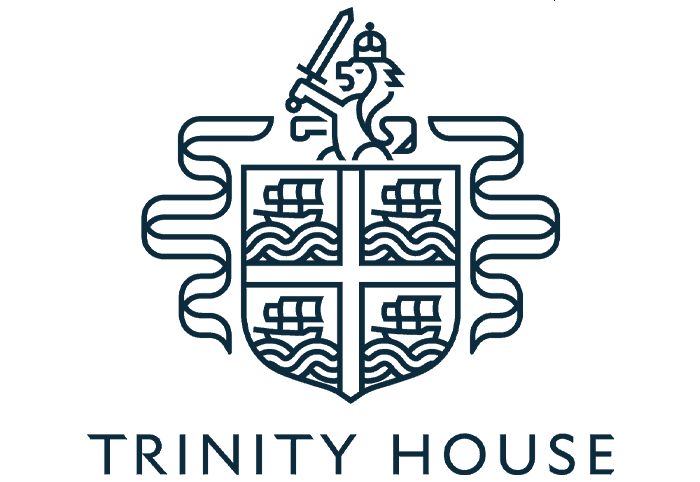Centaur was launched by John and Herbert Cann on 15 February 1895 at their Bathside yard in Gashouse Creek, Harwich, for Charles Stone of Mistley. At this time Cann’s yard was turning out one or two sailing barges each year: Kitty, which was also completed in 1895, is amongst a clutch of their barges which have survived.
Centaur is built of wood as a coasting barge – able to trade all around the British coast and to the near continent. This meant she was larger than the river barges.
Initially the barge traded to Calais from London, Portsmouth and Southampton. She also entered barge races – winning the 1898 Harwich race, in which five barges participated, and the 1899 Medway match.
In October 1933 Centaur joined the Colchester fleet of Francis and Gilders Ltd and entered the grain trade between the London Docks and Ipswich, Yarmouth and Felixstowe. In May 1940 she went to Dover to join the ships preparing for the Dunkirk evacuation, but was damaged tug whilst berthed at Dover and began taking in water. She was unable to sail for Dunkirk and had to return to Maldon for repairs. Centaur resumed trade around the Thames and East Anglia for the rest of the war, and afterwards continued in the grain trade.
In March 1951 Francis and Gilders merged with the London and Rochester Trading Company Ltd but their barges continued to fly their purple and gold bob. However, the new owners were soon intent on selling the acquired barges. Amongst Centaur’s last cargoes in 1954 – 55 were timber to Colchester and Maldon, sugar beet from Ipswich to Silvertown, ballast from Fingringhoe to London, cement from Halling to London, and 40 gallon oil drums from Grain to London. The last four remaining Colchester barges still under sail – Centaur, George Smeed, Kitty and Mirosa – were sold to Brown and Son of Chelmsford, for use as unrigged timber lighters.
Centaur continued in this work for nine years before being sold in 1965 to Richard Duke who converted and re-rigged her for leisure charter work from Pin Mill and Maldon. In 1974 the barge was sold to the Thames Barge Sailing Club, now Thames Sailing Barge Trust. Initially she was based at Faversham, and later at Maldon. In the winter the club began a long and extensive phased restoration of the barge and was not completed until 1995. In the winter of 1988/89 the Ruston auxiliary engine and gearbox, which had become unreliable, was replaced with a Bedford 500 six-cylinder diesel truck engine and a marine gearbox, together with a new propeller.
Centaur still provides weekend sailing trips and charters to members and the public.
Centaur is on the register of National Historic Ships and is also a member of the National Historic Fleet. She is also recognised as a Dunkirk Little Ship.




